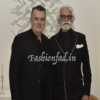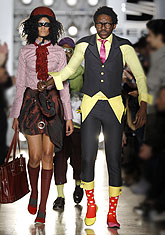 Only sometimes are we reminded of fashion being a canvas of self-expression, and when the punch comes, there is a world-wide uproar, minor adaptations and major questioning. One such stir took place at the 34th edition of ‘Moda Lisboa’ in March 2010 when the menswear collection Mental by Shunnoz & Tekasala (Angolian Designers) took to the runway for Autumn/Winter 2011.
Only sometimes are we reminded of fashion being a canvas of self-expression, and when the punch comes, there is a world-wide uproar, minor adaptations and major questioning. One such stir took place at the 34th edition of ‘Moda Lisboa’ in March 2010 when the menswear collection Mental by Shunnoz & Tekasala (Angolian Designers) took to the runway for Autumn/Winter 2011.For nearly eight years, the young Angolan Shunnoz Tekasala and teamed up to create brand Mental Menswear. The label creates fashion for body, mind and spirit. The designer duo uses the fabric as a tool for survival and has innovated in the way of dressing the Angolan man. Mental presents a fashion that captures the soul of West African: African ideas in tissues Westerners. According to Shunnoz Tekasala, “Our central ideas help us unravel the mysteries of the social mentality of our beloved country Angola. We explore the various ways that the human imagination has.”
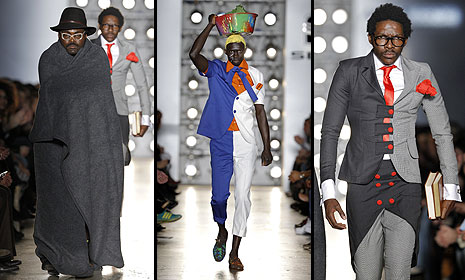
They brought exoticism, colour, rhythm, fun and energy to the Portuguese catwalk with models strolling down the runway on the up-tempo beats of kuduro. Entitled “Tecido-Adaptação” (fabric-adaptation), the collection is all about the construction of ideas, the stimulation of new multicultural thinkers and the search for positive values … the fundamental is to allow the creation of an atmosphere where the new, as long as positive, has room in the society … it invites us to participate in an individual renewal.
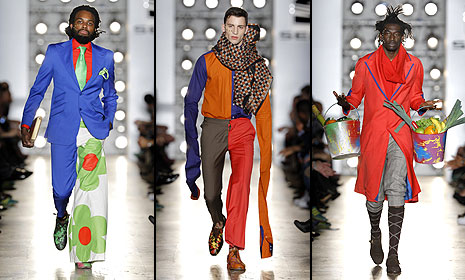
The fabrics chosen by Shunnoz and Tekasala to brighten up cold autumn and winter days brought tremendous vibrancy to the runway in colours such as fuchsia, red, purple, blue, green and yellow, whereas patterns such as stripes, checks, oversized dots, Edwardian florals and paint-splashed fabrics were eclectically mixed to illustrate not only the cultural and financial disparities in Angolan society but also the possibilities of playfulness and regeneration in men’s fashion. This dualistic thinking process came to life in the clothes themselves that also served as metaphors for the ways in which life and fashion are daily experienced on the streets of Luanda, Angola’s capital.

Striped stampings, checks, maxi dots, flowers mix and match suggesting a duality of the human life. The garments were very often ‘divided’ in two, bi-coloured, each half representing itself as cold and warm, life and death, god and devil, man and woman, even the shoes were mismatched thus accentuating this idea of division.
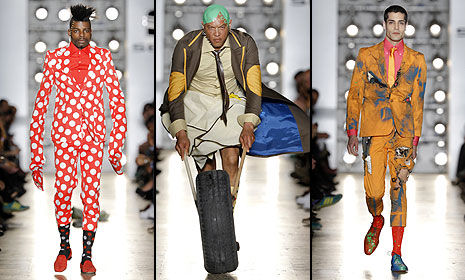
The main concern and challenge for the designers was to allow the making of an individual perception of fashion as a form of positive renewal, where the acceptance of new ideas and products becomes essential to improve society. And our concern would be the same, are we ready to accept our clothes as the medium of self-expression or art and especially when my clothes would be speaking a new language.

Share |







